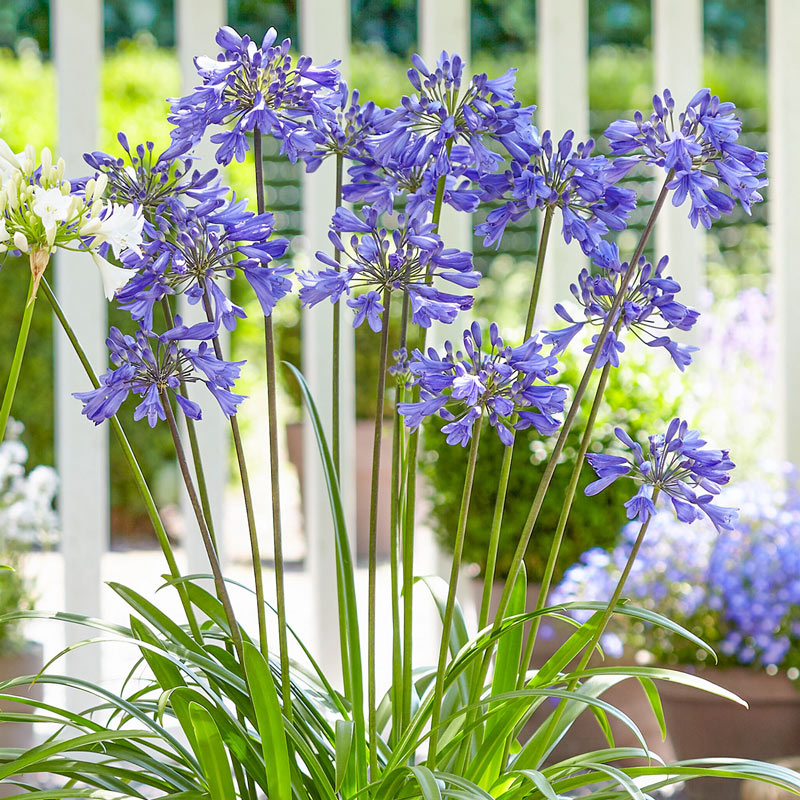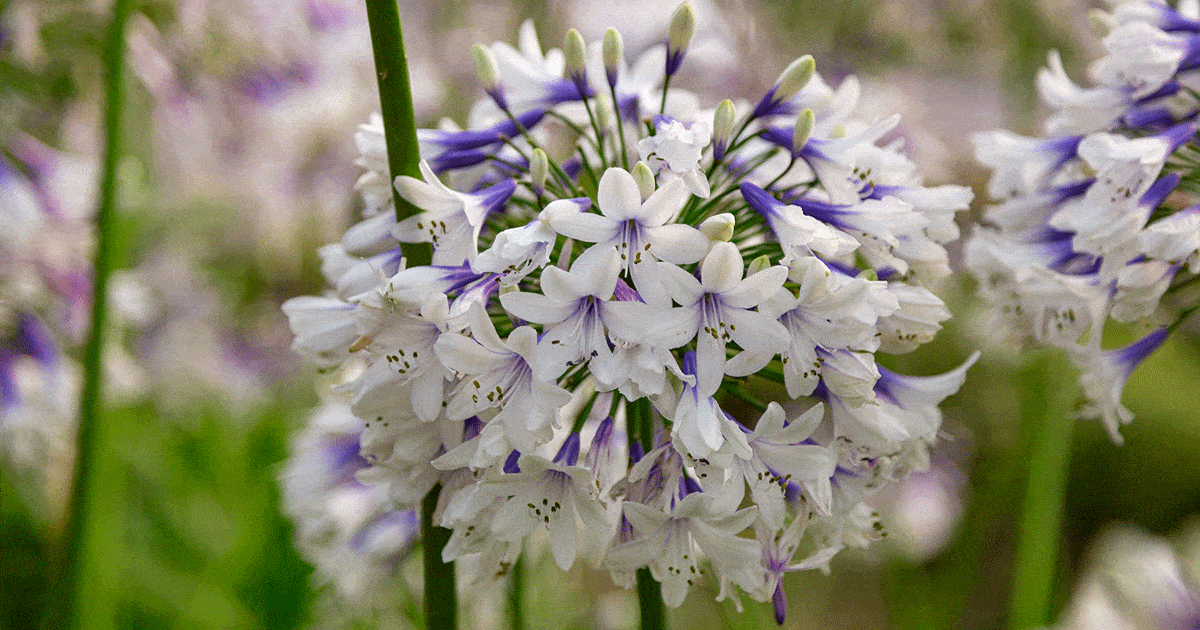Agapanthus Buddy Plant Kingdoms: Perfect Pairings for Your Garden
Agapanthus Buddy Plant Kingdoms: Perfect Pairings for Your Garden
Blog Article
Letting Loose the Secret to Effective Agapanthus Farming: Advice for a Flourishing Garden
In the realm of gardening, cultivating agapanthus efficiently requires a strategic strategy that includes numerous elements of plant treatment. By understanding the nuances of agapanthus cultivation, one can develop a setting where these plants grow and bloom perfectly.
Planting Agapanthus: Best Practices
When planting Agapanthus, correct soil prep work is necessary for making certain successful development and advancement of these gorgeous blossoms. Agapanthus, frequently called Lily of the Nile or African lily, flourishes in well-draining dirt with a slightly acidic to neutral pH degree - Agapanthus. Prior to growing, it is vital to modify hefty clay soils with organic matter such as garden compost or peat moss to improve drainage and provide crucial nutrients for the plants
To plant Agapanthus, select a location that gets full sunlight to partial shade, as this will promote healthy growth and abundant blooming. Dig an opening two times the diameter of the plant's origin ball and position the Agapanthus at the very same depth it was previously expanding. Delicately backfill the hole with soil, pushing down firmly to remove any kind of air pockets around the origins.
Water the recently planted Agapanthus completely and proceed to maintain the soil equally moist, especially throughout the plant's energetic growing season. Agapanthus. Applying a well balanced plant food once a month can better support the plant's growth and blooming. By following these finest techniques for growing Agapanthus, you can develop a stunning display of these fascinating blossoms in your yard
Perfect Dirt Conditions for Agapanthus
For optimum development and flowering success of Agapanthus plants, making certain the soil problems are excellent is crucial. Agapanthus grows in well-draining soil with a somewhat acidic to neutral pH level ranging from 6.0 to 7.0. This type of soil allows for sufficient water drain, preventing waterlogging which can lead to root rot. To improve dirt water drainage, think about adding organic matter such as garden compost or peat moss when preparing the planting website. Moreover, Agapanthus chooses dirt that is rich in nutrients, so including a well balanced plant food throughout the expanding season can advertise healthy and balanced growth and lively blossoms.

Watering and Feeding Tips
To make certain healthy and balanced growth and vibrant flowers, correct watering and fertilizing techniques are necessary for effective Agapanthus farming. Agapanthus plants benefit from regular watering, particularly during the expanding period.
When it concerns feeding Agapanthus, a well balanced fertilizer with equivalent components nitrogen, phosphorus, and potassium can be applied in the spring to promote healthy and balanced development and blooming. Slow-release plant foods are optimal for offering nutrients slowly over a prolonged period. Avoid over-fertilizing, as this can lead to extreme vegetation growth at the cost of blossoms.
In addition, incorporating raw material like compost right into the soil can boost nutrient degrees and enhance dirt framework, aiding in the general wellness of the Agapanthus plants. By complying with these watering and fertilizing suggestions, gardeners can guarantee their Agapanthus plants prosper and produce spectacular displays of blossoms.
Pruning and Deadheading Methods
Proper pruning and deadheading strategies play an important duty in preserving the wellness and appearances of Agapanthus plants, enhancing the essential techniques of watering and feeding for effective growing. these details Trimming Agapanthus involves eliminating invested blossom heads, yellowing or dead leaves, and general shaping of the plant to advertise far better growth. Deadheading, the process of removing faded blossoms, not just enhances the plant's look but likewise encourages additional growing.
When deadheading Agapanthus, it is recommended to trim off the flower stem at the base using sharp, tidy shears. This procedure reroutes the plant's power from seed production back into root and vegetation development, promoting a much healthier and a lot more robust plant. Routine deadheading can prolong the blooming period of Agapanthus and protect against self-seeding, which can result in overcrowding.
In regards to pruning, Agapanthus normally take advantage of a light trim after blossoming to tidy up the plant and encourage fresh development. Cutting down the invested blossom stems and removing any kind of broken or dead foliage assists maintain the plant's vigor and general look. Nevertheless, it is vital to stay clear of cutting right into the crown of the plant, as this can deteriorate its health.

Protecting Agapanthus From Pests and Diseases
Applying efficient parasite and disease administration approaches is important to safeguarding the health and wellness and vitality of Agapanthus plants in farming. One typical bug that influences Agapanthus is the Agapanthus borer, a caterpillar that tunnels into the plant, creating damages to the leaves and flowers.
In enhancement to bugs, Agapanthus are susceptible to site conditions such as origin rot and fungal leaf areas. By staying cautious and addressing insect and illness problems quickly, garden enthusiasts can assist their Agapanthus flourish and thrive.

Conclusion
To conclude, effective cultivation of agapanthus calls for proper growing methods, excellent dirt conditions, adequate watering and fertilizing, regular pruning and deadheading, and security from diseases and insects. By adhering to these methods and pointers, gardeners can guarantee a prospering garden filled with attractive agapanthus blooms. Agapanthus. Keep in mind to keep constant treatment and focus to detail to promote the health and wellness and durability of these sensational plants
When growing Agapanthus, appropriate dirt preparation is vital for making certain effective development and advancement of these lovely flowers.Water the recently planted Agapanthus thoroughly and continue to maintain the soil uniformly moist, specifically throughout the plant's energetic anchor expanding period.For ideal growth and growing success of Agapanthus plants, guaranteeing the soil problems are excellent is essential. When hair transplanting or planting Agapanthus, make certain the soil is well-prepared to provide the needed foundation for the plants to establish themselves efficiently. One typical pest that affects Agapanthus is the Agapanthus borer, a caterpillar that passages right into the plant, causing damage to the flowers and fallen leaves.
Report this page